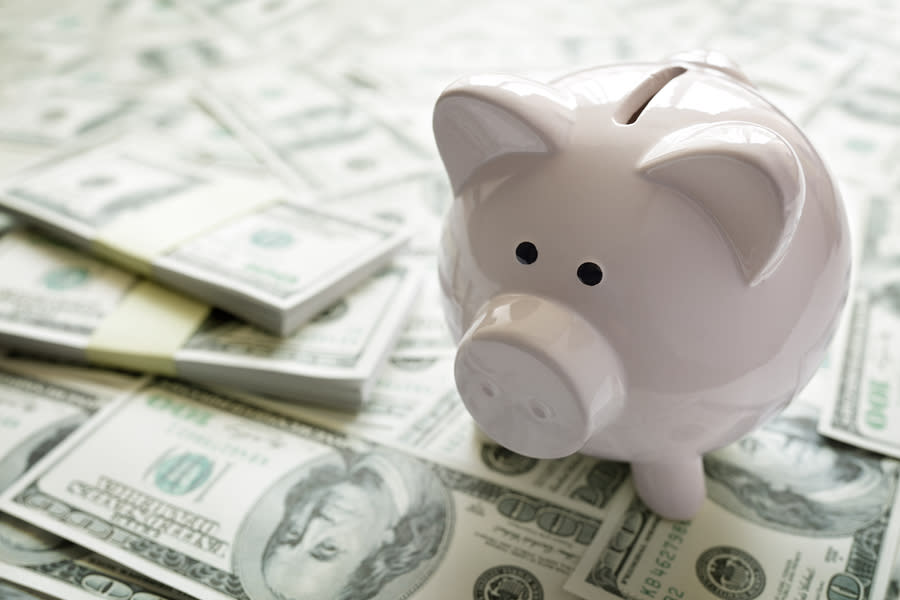How to Maximize Your Retirement Portfolio with These Top-Ranked Dividend Stocks

Here's an eye-opening statistic: older Americans are more afraid of running out of money than of death itself.
And unfortunately, even retirees who have built a nest egg have good reason to be concerned - with the traditional approaches to retirement planning, income may no longer cover expenses. That means retirees are dipping into principal to make ends meet, setting up a race against time between dwindling investment balances and longer lifespans.
Your parents' retirement investing plan won't cut it today.
For many years, bonds or other fixed-income assets could produce the yield needed to provide solid income for retirement needs. However, these yields have dwindled over time: 10-year Treasury bond rates in the late 1990s were around 6.50%, but today, that rate is a thing of the past, with a slim likelihood of rates making a comeback in the foreseeable future.
While this yield reduction may not seem drastic, it adds up: for a $1 million investment in 10-year Treasuries, the rate drop means a difference in yield of more than $1 million.
Today's retirees are getting hit hard by reduced bond yields - and the Social Security picture isn't too rosy either. Right now and for the near future, Social Security benefits are still being paid, but it has been estimated that the Social Security funds will be depleted as soon as 2035.
How can you avoid dipping into your principal when the investments you counted on in retirement aren't producing income? You can only cut your expenses so far, and the only other option is to find a different investment vehicle to generate income.
Invest in Dividend Stocks
We feel that these dividend-paying equities - as long as they are from high-quality, low-risk issuers - can give retirement investors a smart option to replace low-yielding Treasury bonds (or other bonds).
Look for stocks that have paid steady, increasing dividends for years (or decades), and have not cut their dividends even during recessions.
A rule of thumb for finding solid income-producing stocks is to seek those that average 3% dividend yield, and positive yearly dividend growth. These stocks can help combat inflation by boosting dividends over time.
Here are three dividend-paying stocks retirees should consider for their nest egg portfolio.
Goldman Sachs (GS) is currently shelling out a dividend of $2.5 per share, with a dividend yield of 3.06%. This compares to the Financial - Investment Bank industry's yield of 0% and the S&P 500's yield of 1.73%. The company's annualized dividend growth in the past year was 25%. Check Goldman Sachs (GS) dividend history here>>>
Interpublic Group (IPG) is paying out a dividend of $0.31 per share at the moment, with a dividend yield of 3.22% compared to the Advertising and Marketing industry's yield of 0% and the S&P 500's yield. The annualized dividend growth of the company was 6.9% over the past year. Check Interpublic Group (IPG) dividend history here>>>
Currently paying a dividend of $0.24 per share, Kite Realty Group (KRG) has a dividend yield of 4.66%. This is compared to the REIT and Equity Trust - Retail industry's yield of 4.57% and the S&P 500's current yield. Annualized dividend growth for the company in the past year was 26.32%. Check Kite Realty Group (KRG) dividend history here>>>
But aren't stocks generally more risky than bonds?
Overall, that is true. But stocks are a broad class, and you can reduce the risks significantly by selecting high-quality dividend stocks that can generate regular, predictable income and can also decrease the volatility of your portfolio compared to the overall stock market.
Combating the impact of inflation is one advantage of owning these dividend-paying stocks. Here's why: many of these stable, high-quality companies increase their dividends over time, which translates to rising dividend income that offsets the effects of inflation.
Thinking about dividend-focused mutual funds or ETFs? Watch out for fees.
You may be thinking, "I like this dividend strategy, but instead of investing in individual stocks, I'm going to find a dividend-focused mutual fund or ETF." This approach can make sense, but be aware that some mutual funds and specialized ETFs carry high fees, which may reduce your dividend gains or income, and defeat the goal of this dividend investment approach. If you do wish to invest in a fund, do your research to find the best-quality dividend funds with the lowest fees.
Bottom Line
Seeking steady, consistent income through dividends can be a smart option for financial security in retirement, whether you invest in mutual funds, ETFs, or in dividend-paying stocks.
Want the latest recommendations from Zacks Investment Research? Today, you can download 7 Best Stocks for the Next 30 Days. Click to get this free report
The Goldman Sachs Group, Inc. (GS) : Free Stock Analysis Report
Interpublic Group of Companies, Inc. (The) (IPG) : Free Stock Analysis Report
Kite Realty Group Trust (KRG) : Free Stock Analysis Report

 Yahoo Finance
Yahoo Finance 